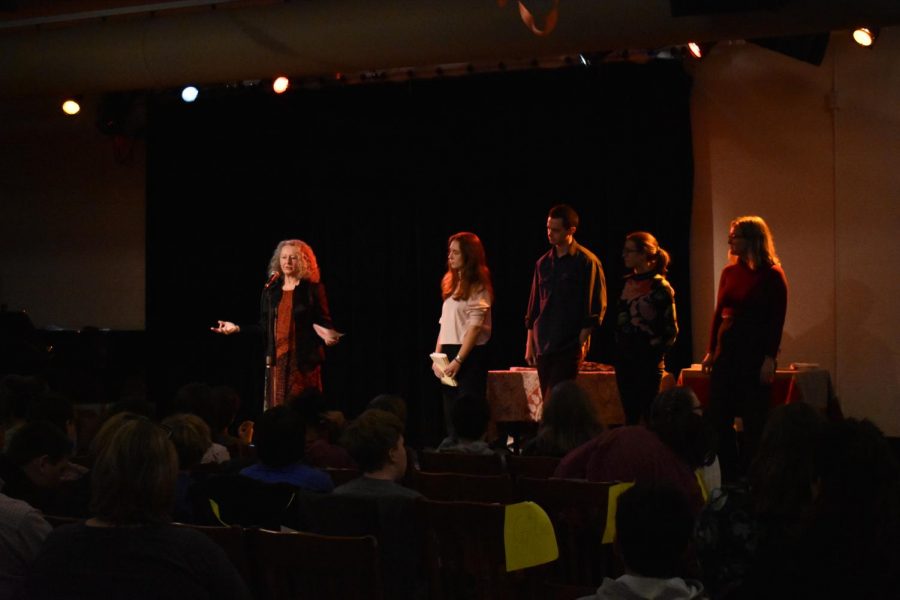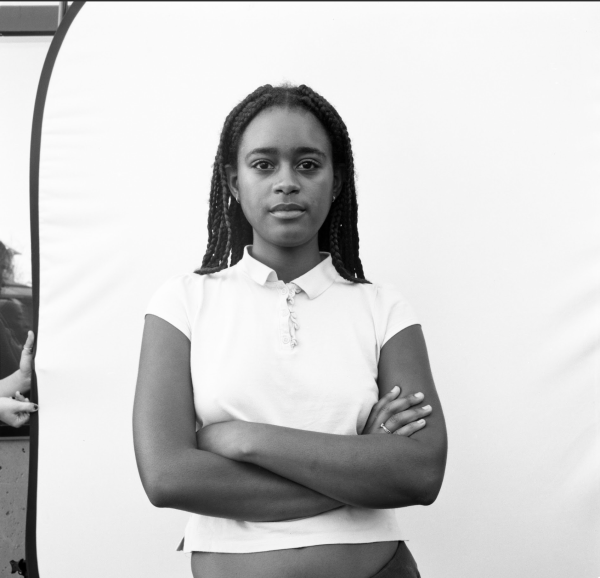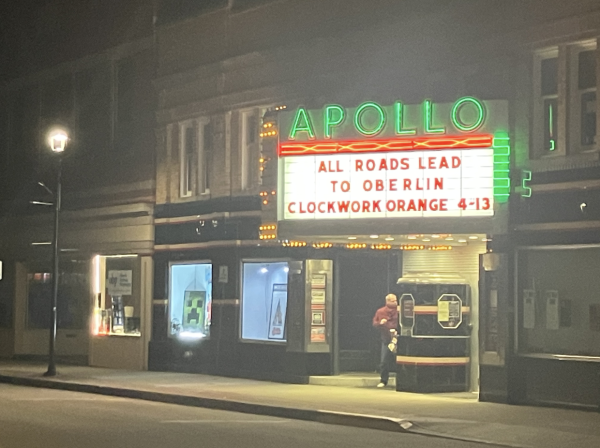College Mentors Work with Elementary, Middle School Students
Lecturer in Creative Writing and WITS mentors discuss their work in Langston Middle School at Monday night’s poetry reading.
Rarely have I smiled so hard as I did at the Cat in the Cream this past week at not one but two fantastic performances by students from local Oberlin schools.
Kids from Prospect Elementary School and Langston Middle School wowed packed houses on Monday and Wednesday — Monday night’s offering was a poetry reading by the middle school students, and Wednesday’s was a dance performance by students from both schools as a culmination of the afterschool program Girls and Boys in Motion. Both of these performances came from the hard work of Oberlin College students in Oberlin schools, and the community support from both the town and the College was palpable as parents and students alike filled the seats.
At the poetry reading, the sixth, seventh, and eighth grade classes of Langston Middle School read poems they’d been working on in their Language Arts classes. Lecturer in Creative Writing Lynn Powell and the College students in her Teaching Imaginative Writing class helped the students write the poems during a series of workshops hosted by Oberlin Writers in the Schools. This work culminated in anthologies for each class, as well as this performance.
Powell, who College junior and Teaching Imaginative Writing student Victoria Liebetrau calls a “poetry superhero,” started a smaller poetry pedagogy program during her early career at Oberlin, between 2004 and 2006. The program was so successful that former President Marvin Krislov asked her to return and expand it. Today, that expansion is known as the WITS program.
“Our WITS work is rewarding and challenging for the same reason — because every day in the classroom everyone is a learner and everyone is a teacher!” Powell wrote in an email to the Review. “That means that when my College students and I go into the middle school to teach, even though we go in as prepared as we can be, we also stay open to what we can learn from the middle school students. Teaching not for the right answers but for authentic conversation and imaginative engagement can be scary for new teachers! But we are all constantly rewarded by having our own imaginations and understandings enlarged by the insights and poetry of the middle schoolers.”
Students were given inventive prompts by both Powell and the student-teachers — and the works they delivered were imaginative indeed. Students mused upon the idea of an intergalactic exchange student, what would happen if a doodle of a potato came to life, and what it would be like to have a rain-cloud as a pet, among other speculations. Some pondered the ridiculousness of cooking or the oppressiveness of city buildings. Still others contemplated the difficulties of moving and the meaning of love. Many students explored which words sound fun and interesting together.
“I remember middle school being such an awkward, difficult time of life, and creative expression is so necessary to process things that are going on,” Liebetrau wrote in an email to the Review. “They’re growing into themselves and discovering who they are at an extreme pace, which is no easy task. It was interesting to see how this change was reflected in their work. Our students really plunged into the assignments and wrote fantastic pieces; they’re wise beyond their years.”
Similar responses to a period of heavy growth informed the Girls and Boys in Motion dance performance, as Wednesday found the Cat in the Cream bursting with the sound and energy of students in matching shirts — red for Girls in Motion, blue for Boys. That energy carried onto the stage for a performance marking the 15th year of Girls in Motion (the Boys division came later).
Girls from Prospect School kicked things off with an animated interpretation of Rachel Platten’s “Fight Song” that had site leader and Girls in Motion Exco co-instructor Ruth Bieber-Stanley tearing up. A College sophomore, Bieber-Stanley first came to Girls in Motion last year at a Dance department interest meeting during orientation.
“[Naomi Roswell, OC ’18] described the mission behind the group, which is trying to get middle school girls to be more confident and body positive and fostering communication through dance,” she said. “The mission of the group really appealed to me.”
The Langston girls, with whom Bieber-Stanley works specifically, performed their routine to the song “Growing Pains” by Alessia Cara. According to Bieber-Stanley, Girls in Motion focuses on addressing exactly those feelings in middle school girls.
“Something we did a lot of this semester was isolations,” she said. “Because a lot of these girls have started going through puberty and it sucks, but if you’re a person with boobs you get immediately sexualized, even if you’re 12 or 13, which is just terrible. So we do a lot of stuff where you are moving your hips and your butt and your ribs — because I feel like it sort of lessens that stigma around moving those parts of your body. It’s not inherently sexual — our society just makes it like that.”
Of course, acclimating to uninhibited movement can be difficult at first.
“It’s really interesting seeing them do it, because they’re super uncomfortable at first — they’re always like ‘This is so awkward!’” said Bieber-Stanley, “But the mentors always do it too, to try to show them that it’s not awkward, you’re just moving your body.”
It’s important to send kids this message: Expression isn’t awkward, it’s freeing and beautiful. The same was reflected at the poetry reading — the middle school teachers read poetry they’d written, too. Additionally, several College students brought their own poems to the classroom. All this deconstructs the notion that poetry is an inaccessible form, making it a fun source of expression like any other.
The emphasis here is not so much on the polished final product, but on expression and enjoyment. Once every group from Girls and Boys in Motion had performed, Chair of Dance and Professor Ann Cooper Albright took to the stage and announced that the performance — which had only taken around 15 minutes — was about to happen again.
“The first time it’s really scary to get up there, but the second time you realize how much fun it is to perform!” she said.
The confidence was even more palpable in the second performance — particularly during the Boys in Motion dance, where some of the smaller kids from Prospect bounced around animatedly, one wearing a Spiderman baseball cap, among lifts and pyramids by the bigger kids.
It is a real joy and privilege for College students to be a part of mentoring community members, and for other students to see the happy faces of parents and friends who are watching the kids perform. Of course, the parents are proud — but what’s really great is seeing the kids be proud, too, in spite of themselves.









